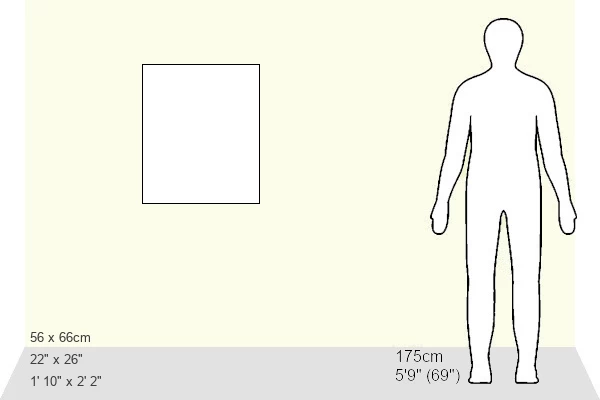Fine Art Print : 1812 Cuvier on Scheuchzers flood victim
![]()

Fine Art Prints from Science Photo Library
1812 Cuvier on Scheuchzers flood victim
Illustration in Vol. 4 of Cuviers " Ossamens Fossiles" 1812. In 1726 Scheuchzer illustrated Homo Diluvii testis as a fossil human victim of the flood. In 1811 Baron Cuvier, who famously said " there are no human fossils", took a look at the specimen. His work revealed more of the limbs and many obviously non-human features. He identified it correctly as a giant Salamander close to proteus. There are many accounts of this incident but few note that Cuvier cites two different specimens (here Fig 2 is Scheuchzer s, but Fig 3 is different and more complete specimen of Dr. Amman of Zurich). The current genus name Andrias was coined in 1837. Hence the current scientific name Andrias (image of man) scheuchzeri. There is a living member of the genus A. davidianus, the Japanese giant salamander. Cuvier also showed Scheuchzers illustrated human vertebrae" (Fig. 6&7) belong to a fossil crocodile
Science Photo Library features Science and Medical images including photos and illustrations
Media ID 6317395
© PAUL D STEWART/SCIENCE PHOTO LIBRARY
Bible Black And White Creationism Creationist Cuvier Flood Human Fossil Paleontologist Physica Sacra Giant Salamander Mono Chrome Palaeontology Scheuchzer The Flood
20"x16" (+3" Border) Fine Art Print
Discover the captivating beauty and historical significance of the Media Storehouse Fine Art Prints, featuring Paul D. Stewart's stunning interpretation of Cuvier on Scheuchzer's Flood Victim. This exquisite artwork, taken from the pages of Cuvier's "Ossemens Fossiles" published in 1812, showcases the intriguing debate between Georges Cuvier and Johann Jakob Scheuchzer over the interpretation of the 'Homo Diluvii testis' fossil. A must-have for art enthusiasts, historians, and those with an appreciation for the scientific discoveries of the past, this Fine Art Print adds a touch of history and elegance to any space.
20x16 image printed on 26x22 Fine Art Rag Paper with 3" (76mm) white border. Our Fine Art Prints are printed on 300gsm 100% acid free, PH neutral paper with archival properties. This printing method is used by museums and art collections to exhibit photographs and art reproductions.
Our fine art prints are high-quality prints made using a paper called Photo Rag. This 100% cotton rag fibre paper is known for its exceptional image sharpness, rich colors, and high level of detail, making it a popular choice for professional photographers and artists. Photo rag paper is our clear recommendation for a fine art paper print. If you can afford to spend more on a higher quality paper, then Photo Rag is our clear recommendation for a fine art paper print.
Estimated Image Size (if not cropped) is 40.6cm x 50.8cm (16" x 20")
Estimated Product Size is 55.9cm x 66cm (22" x 26")
These are individually made so all sizes are approximate
Artwork printed orientated as per the preview above, with portrait (vertical) orientation to match the source image.
EDITORS COMMENTS
This print showcases an illustration from Volume 4 of Cuvier's "Ossamens Fossiles" published in 1812. The image depicts a significant moment in the history of paleontology, specifically related to the controversial topic of human fossils and their connection to biblical events. In 1726, Scheuchzer presented his famous illustration titled "Homo Diluvii testis" depicting a fossilized human victim of the flood described in the Bible. However, renowned Baron Cuvier, who famously declared that there were no human fossils, examined this specimen in 1811 with intriguing results. Cuvier's meticulous work revealed additional limbs and distinct non-human characteristics. He correctly identified it as a giant Salamander closely resembling proteus rather than a human being. It is worth noting that Cuvier cited two different specimens: Fig 2 representing Scheuchzer's work and Fig 3 displaying Dr. Amman's more complete specimen from Zurich. The scientific name Andrias scheuchzeri was coined for this ancient creature in 1837 due to its resemblance to humans (Andrias meaning "image of man"). Interestingly, there exists a living member of this genus called A. davidianus – the Japanese giant salamander. Furthermore, Cuvier also debunked another misidentification by demonstrating that Scheuchzer's illustrated human vertebrae actually belonged to a fossil crocodile rather than Homo Diluvii testis. This thought-provoking image sheds light on the intersection between science and religious beliefs while highlighting important advancements made by paleontologists like Baron Cuvier during their quest for knowledge about our planet's prehistoric past.
MADE IN THE USA
Safe Shipping with 30 Day Money Back Guarantee
FREE PERSONALISATION*
We are proud to offer a range of customisation features including Personalised Captions, Color Filters and Picture Zoom Tools
SECURE PAYMENTS
We happily accept a wide range of payment options so you can pay for the things you need in the way that is most convenient for you
* Options may vary by product and licensing agreement. Zoomed Pictures can be adjusted in the Cart.



